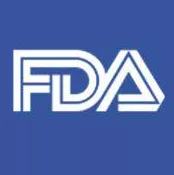FDA Introduces Faster, Easier Reportable Food Registry Process

Moyo Studio/iStock / Getty Images Plus via Getty Images
The U.S. Food and Drug Administration (FDA) has published a new, interactive public data dashboard that will allow its constituents to view historical data from the Reportable Food Registry (RFR), a tool that the food industry uses to alert FDA of a dangerous food product. The new dashboard will be updated annually and make it faster and easier to get better data from the RFR. The RFR program will help FDA's state and local partners better determine when to issue health alerts, take steps to remove harmful food from the market, and target enforcement efforts, such as sampling assignments.
The new RFR public data dashboard contains 10 years of data, from September 2009 to September 2019, and covers 28 commodities and 20 food safety hazards. Unlike past RFR annual reports previously used to publish data, the new dashboard allows users to interact with the data points to gather more customized information at any time to find answers to their specific questions. Users can modify the graphs and charts and view trends based on selected commodities, hazards, and time frames. The dashboard is available as part of the FDA-TRACK program, the FDA's agency-wide performance management system.
In publishing this dashboard, FDA is taking additional steps to increase public data access by including a downloadable, raw RFR data set to enable stakeholders to perform their own analyses.
In modernizing how people can view and use RFR data, the interactive dashboard:
- Increases access and transparency with state and local partners who use the data to better plan work and determine how to target their own sampling assignments to concerns that are more common in their areas
- Allows industry to educate themselves on trends and identify areas where additional good manufacturing practices and preventive controls could better prevent future outbreaks or contamination in their products
- Offers a robust data set to researchers and others who are interested in studying the safety of our food system.
Overall, this will be a more efficient, less resource-intensive process for FDA to provide data.
When companies discover a food product is dangerous or potentially deadly, they must submit a reportable food report to FDA using an electronic portal. In 2022, FDA will begin a project to allow companies to export the RFR data from their internal business systems or from third-party applications directly to the portal with just a click of a button. Once FDA's work is complete, human and animal food companies will be able to upload RFR reports as structured electronic files in Extensible Markup Language format to the Safety Reporting Portal. The food information, including any associated recall data, will then go simultaneously to experts and systems related to both the RFR and Recalls Programs.
FDA anticipates that this update will be available in 2023.
Both of these efforts reflect significant progress toward creating a safer and more digital food system, which is a key goal of the New Era of Smarter Food Safety initiative. They also represent FDA's commitment to transparency, efficiency, and collaboration with stakeholders from all points in the American food supply.
Additionally, the new reporting process for industry will address concerns about the need for enhanced data connectivity that food retailers, processors, and technology providers have expressed for several years. This enhanced feature will allow industry to provide data more quickly and save a tremendous amount of time for both industry and FDA employees, and will allow FDA to reallocate resources to implementing future improvements.
Looking for quick answers on food safety topics?
Try Ask FSM, our new smart AI search tool.
Ask FSM →








